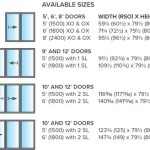Ideas for Covering a Cracked Concrete Patio
A cracked concrete patio can be an unsightly problem, diminishing the aesthetic appeal of an outdoor living space and potentially posing safety hazards. Rather than endure the inconvenience and expense of complete replacement, covering the existing patio offers a viable and often more cost-effective solution. A multitude of options exist, ranging from simple DIY fixes to more elaborate and professionally installed solutions. Selecting the optimal covering material depends on factors such as the severity of the cracks, the desired aesthetic, budget constraints, and anticipated usage of the patio.
Before considering any covering option, it is imperative to address the underlying cause of the cracking. Common causes include soil settlement, freeze-thaw cycles, tree root intrusion, and inadequate initial construction. Failure to address these underlying issues can lead to the new covering also cracking or becoming damaged. A professional assessment may be necessary to identify and rectify any significant structural problems.
Resurfacing with Concrete Overlays
Concrete overlays provide a new, seamless surface atop the existing cracked concrete. This method involves applying a thin layer of specially formulated concrete mix, typically polymer-modified, to the prepared surface. The existing concrete must be cleaned thoroughly and potentially roughened to ensure proper adhesion of the overlay material. Cracks may need to be filled with a patching compound before applying the overlay depending on their size and depth.
Various types of concrete overlays are available, each offering different aesthetic and performance characteristics. Stampable overlays allow for the creation of textured surfaces mimicking natural stone, brick, or tile. Self-leveling overlays can create a smooth, uniform surface, suitable for modern or minimalist designs. Micro-toppings are thin overlays used for creating subtle textures or restoring the appearance of worn concrete.
The application process typically involves mixing the concrete overlay material according to the manufacturer's instructions, applying it to the prepared surface, and then texturing or finishing it as desired. For stampable overlays, stamps are pressed into the wet concrete to create the desired pattern. After the overlay has cured, a sealant is applied to protect it from staining and weathering. A concrete overlay can offer a durable and aesthetically pleasing solution for covering cracked concrete, extending the life of the patio without the need for complete removal and replacement.
Advantages of concrete overlays include their relatively low cost compared to complete replacement, the ability to customize the appearance with various textures and colors, and the durability of the finished surface. Disadvantages include the need for careful surface preparation, the potential for the overlay to crack if the underlying concrete is unstable, and the requirement for professional installation for complex designs or large areas.
Installing Pavers or Flagstone
Pavers or flagstone offer a more visually striking and durable alternative to concrete overlays. These materials can be installed directly over the existing concrete patio, provided it is structurally sound and relatively level. Any significant dips or unevenness in the concrete should be addressed before installation to ensure a stable and level surface for the pavers or flagstone.
Pavers are manufactured concrete or clay units available in a wide range of shapes, sizes, colors, and textures. Flagstone is a natural stone material typically composed of sedimentary rock such as sandstone or slate. Both pavers and flagstone offer excellent durability and resistance to weathering, making them suitable for outdoor use. They also provide a permeable surface, allowing water to drain through the joints between the units.
The installation process typically involves laying a bed of sand or gravel over the existing concrete patio to create a level base. The pavers or flagstone are then placed on the base, ensuring that they are properly aligned and spaced. The joints between the pavers or flagstone are filled with sand or polymeric sand, which helps to stabilize the units and prevent weed growth. A power compactor may be used to further compact the pavers or flagstone and ensure a level surface. The edges of the patio can be finished with edging restraints to prevent the pavers or flagstone from shifting over time.
The choice between pavers and flagstone depends on personal preference and the desired aesthetic of the patio. Pavers offer a more uniform and predictable appearance, while flagstone provides a more natural and rustic look. Both materials are available in a range of price points, depending on the quality, size, and type of stone. Proper installation is essential to ensure the longevity and stability of the paver or flagstone patio.
Advantages of pavers and flagstone include their durability, visual appeal, and permeability. Disadvantages include the higher cost compared to concrete overlays, the need for careful installation, and the potential for weed growth in the joints. Significant unevenness in the original slab might require extensive leveling measures before installation.
Covering with Outdoor Carpeting or Deck Tiles
Outdoor carpeting or deck tiles provide a softer and more comfortable surface for a cracked concrete patio. These materials are typically made from synthetic fibers or composite materials that are resistant to water, mildew, and fading. They offer a quick and easy way to cover up unsightly cracks and create a more inviting outdoor space.
Outdoor carpeting is available in a variety of colors, textures, and patterns. It can be installed directly over the existing concrete patio using adhesive or double-sided tape. Deck tiles are interlocking units that snap together to create a seamless surface. They are typically made from wood, plastic, or composite materials and are available in a range of sizes and styles.
The installation process for outdoor carpeting is relatively simple. The concrete patio should be cleaned thoroughly before applying the adhesive or tape. The carpeting is then rolled out and cut to fit the shape of the patio. The edges of the carpeting can be secured with edging strips or trim. Deck tiles are even easier to install. The tiles are simply snapped together, creating a floating surface that covers the existing concrete patio.
Outdoor carpeting and deck tiles offer a temporary and affordable solution for covering cracked concrete. They are easy to install and can be removed if desired. However, they may not be as durable as concrete overlays or pavers, and they may require more frequent cleaning and maintenance. They are also less resistant to heavy foot traffic and may show wear and tear over time.
Advantages of outdoor carpeting and deck tiles include their ease of installation, affordability, and comfort. Disadvantages include their lack of durability, potential for staining and fading, and limited aesthetic appeal compared to other covering options. These options are best suited for patios that do not experience heavy use or exposure to harsh weather conditions.
Another factor to consider is the potential for moisture to become trapped underneath the carpeting or tiles, which could lead to mold or mildew growth. Proper drainage and ventilation are essential to prevent this problem. The choice of material should also take into account the climate and weather conditions in the area. For example, in areas with heavy rainfall or snowfall, it is important to choose materials that are water-resistant and slip-resistant.
Beyond these primary covering options, several other alternatives exist, offering varying degrees of durability, aesthetic appeal, and cost-effectiveness. These include:
* Epoxy Coatings: Similar to concrete overlays, epoxy coatings provide a durable and seamless surface. They are often used in garages and industrial settings but can also be applied to patios for a modern and industrial look. Epoxy coatings are highly resistant to chemicals, stains, and abrasion. * Rubber Mulch: Rubber mulch is made from recycled tires and provides a soft and slip-resistant surface. It is a popular choice for playgrounds and can also be used to cover a concrete patio, especially in areas where children play. * Artificial Turf: Artificial turf offers a low-maintenance alternative to natural grass. It can be installed over the existing concrete patio to create a green and inviting outdoor space. * Gravel or Crushed Stone: A layer of gravel or crushed stone can be spread over the existing concrete patio to create a rustic and informal look. This is a relatively inexpensive option, but it may not be suitable for areas with heavy foot traffic.Ultimately, the best solution for covering a cracked concrete patio depends on individual needs, preferences, and budget. Careful consideration of the factors discussed above will help to ensure that the chosen covering material is both aesthetically pleasing and functional.

Cracked Concrete Patio Restoration For 60 Youtube

Easy Concrete Patio Coverup Ideas The Garden Glove

Diy Ideas To Update Your Worn Out Concrete Patio Home And Garden

Easy Concrete Patio Coverup Ideas The Garden Glove

Need Ideas For My Cracked Concrete Patio

Concrete Patio Resurfacing Coating Options Ideas Sundek

Resurfacing A Concrete Patio For Budget Diy Makeover Fab Everyday

Easy Concrete Patio Coverup Ideas The Garden Glove

Reuse Old Concrete To Make A One Of Kind Rustic Patio For Free Except The Beer And Lunch You Ll Have Your Friends Helping Roll These Boulders Across Yard

7 Inexpensive Ways To Cover Your Concrete Patio Today S Homeowner








